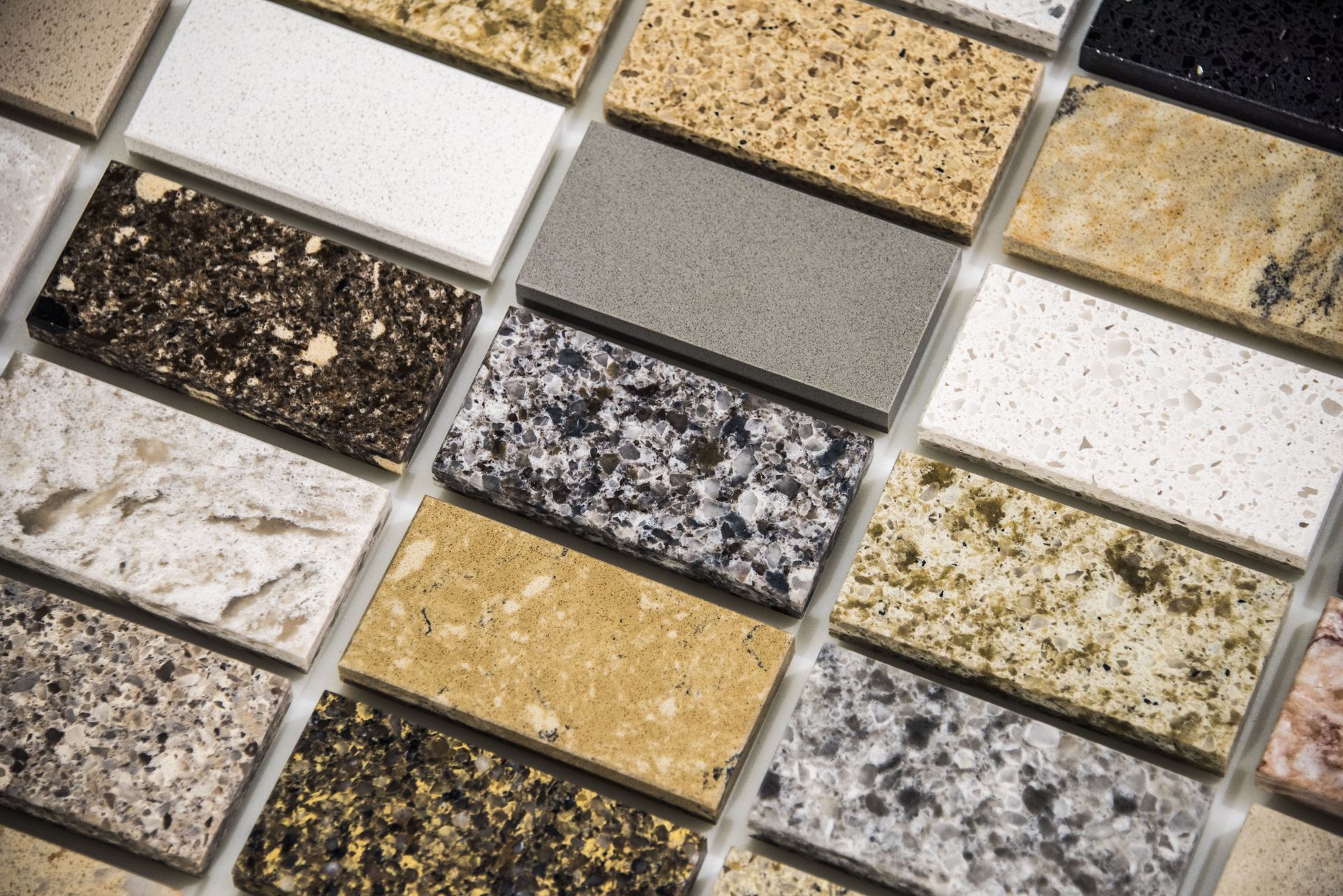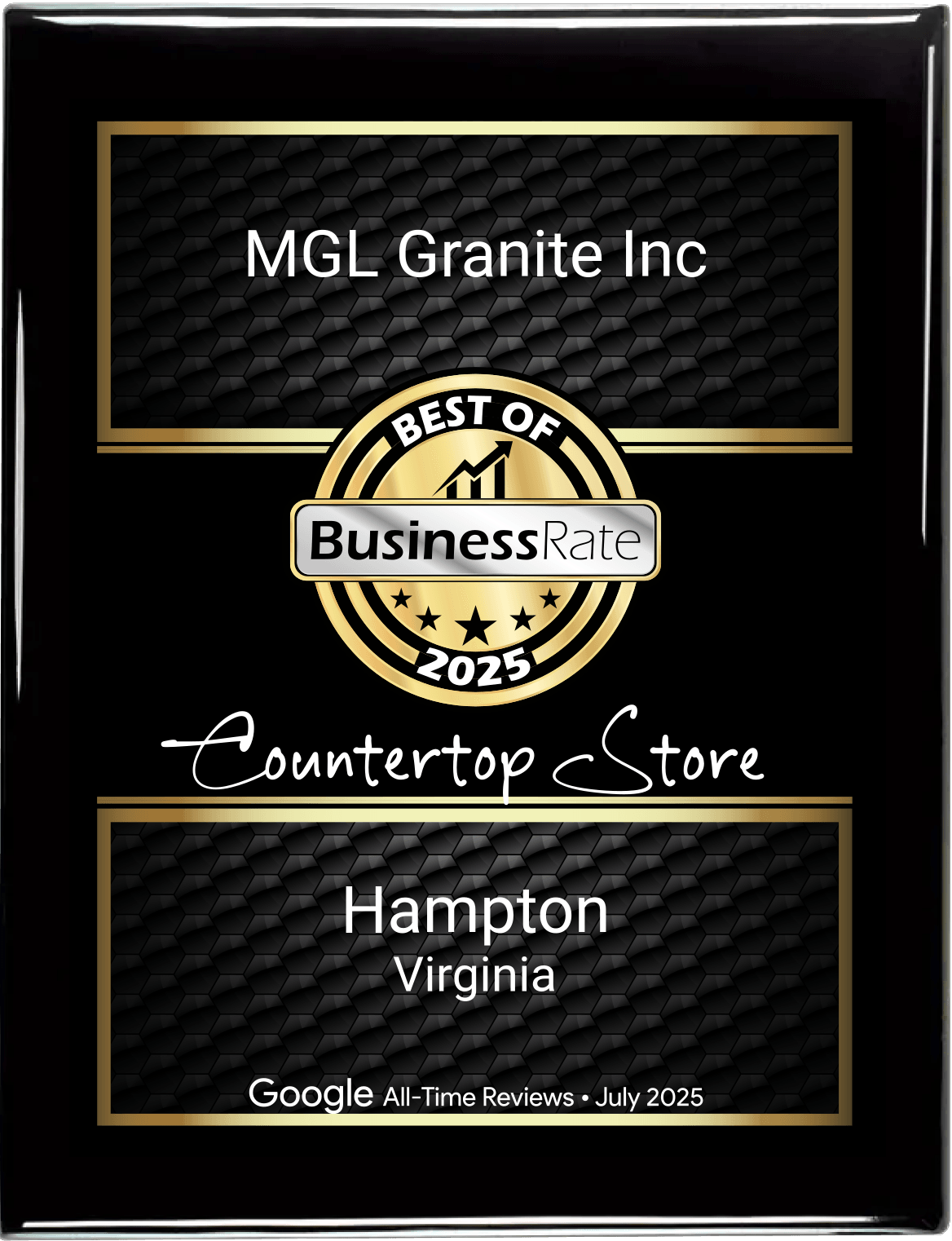From Quarry to Countertop: The Journey of Granite and Marble
May 1, 2025
Understanding the Quarrying and Processing Techniques for Granite and Marble

Granite and marble are two of the most sought-after natural stones for countertops and vanities, prized for their aesthetic appeal and timeless elegance. But how does a raw stone from deep within the Earth become the stunning countertop or vanity that enhances your kitchen or bathroom? The process involves both intricate quarrying and careful fabrication to ensure each piece of granite or marble meets the desired look and functionality.
In this post, we'll walk you through the steps of quarrying and processing granite and marble, from their extraction in quarries to their final transformation into beautiful surfaces, including the crucial fabrication and installation process by companies like MGL Granite.
The Quarrying Process: Extracting Granite and Marble
The journey of granite and marble begins deep underground, where these stones are found in large deposits. Quarrying is the first step in bringing these raw materials to the surface.
1. Locating the Quarry
Granite and marble deposits are generally located in regions known for their unique geological formations. Granite is often found in large veins, while marble is typically found in areas that were once ancient seabeds. The best-known marble quarries are in Italy, Greece, and Turkey, while granite is extracted in countries like Brazil, India, and the United States.
Once the stone is located, geologists and quarry operators assess the quality and size of the deposit to ensure that the stone will meet the specific needs of countertop and vanity projects. This includes examining the stone’s patterns, color, and overall quality.
2. Extracting the Stone
The extraction process begins with the drilling of holes into the stone to insert explosives, which help loosen the large blocks of granite or marble. The stones are then cut free from the quarry using heavy machinery, such as diamond wire saws, which can handle the dense, tough material. These blocks of stone can weigh tons and must be carefully handled during extraction to prevent damage. After extraction, the large blocks are transported to processing facilities, where they will be cut into slabs for further refinement.
The Processing Process: Shaping the Stone
After extraction, the granite or marble blocks are ready for processing. This stage is where the raw stone is transformed into beautiful slabs that are suitable for use as countertops, vanities, and backsplashes.
1. Cutting the Stone into Slabs
At the processing facility, the first step is to cut the raw blocks of granite or marble into slabs of manageable size. This is done with industrial saws equipped with diamond-tipped blades. Depending on the size of the block, multiple slabs can be cut at once, maximizing the yield from each stone block. The slabs are typically cut to standard dimensions, such as 10 to 12 feet long and 1.25 to 2 centimeters thick, although custom sizes can be requested for specific projects. For particularly large blocks, multi-wire machines are used, which allow for more precise cutting, and the ability to cut several slabs at once.
2. Polishing and Finishing the Surface
Once the slabs are cut, they are polished to enhance the stone's natural color and veining. Polishing machines use abrasive pads and polishing compounds to give the stone a smooth, glossy finish. The level of shine varies depending on the desired finish—from a high-gloss shine to a matte or honed finish, which is particularly popular for marble in bathroom vanities. Granite typically features a glossy finish, which makes its natural colors and patterns pop, while marble, depending on the finish, can offer a more subtle elegance. Other finishes, like brushed or leathered, can also be applied, giving the stone a unique, textured look.
3. Fabrication: Customizing the Slabs
Once the slabs are polished and the surface is perfected, it’s time for fabrication. This is where the stone is cut and shaped to meet the specific needs of the project. At this stage, the fabricator, like MGL Granite, will customize the slabs for your countertops or vanities. Fabrication involves cutting out areas for sinks, faucets, and other features, as well as shaping the stone with edge profiles. Popular edge styles include straight, beveled, bullnose, ogee, and more (which we discuss further in a different blog post). The fabricator carefully measures and cuts the slabs, ensuring that the finished product fits perfectly within the intended space. The edges of the stone are also polished during this process to ensure they have a smooth, refined finish. Whether you prefer a sleek, modern edge or a more decorative profile, the fabricator can create the ideal edge for your design.
Quality Control: Inspecting the Material
At MGL Granite, we believe in ensuring that only the highest-quality materials are used in your project. Before we begin the fabrication process, we carefully inspect all the granite and marble material once it is delivered to us. This allows us to ensure that the stone meets our standards and is free of any defects that could affect the final product.
This step is crucial, as it ensures that we work with the best possible material before any cutting or shaping takes place, ensuring a flawless result for your countertops or vanities.
Transporting and Installing the Finished Slabs
After fabrication is complete, the granite or marble slabs are ready for installation. Once the finished slabs arrive at the job site, it’s time to set them in place. At MGL Granite, our skilled installers take great care in placing the slabs accurately, ensuring the seams are tight and the edges are polished to perfection.
During the installation, we also make any final adjustments necessary to fit the slabs to the exact dimensions of your kitchen or bathroom. Once in place, the stone is cleaned, and final sealing is often applied to protect the surface and enhance its durability.
Conclusion
The journey from raw stone to beautiful countertop or vanity is a carefully executed process, requiring expertise and attention to detail at every step. From quarry extraction to meticulous fabrication and expert installation, the process ensures that the final product is both functional and stunning.
At MGL Granite, we manage every aspect of the process—from the moment the stone is delivered to our facility, through the careful inspection and fabrication, to the final installation. Whether you’re choosing granite or marble, our team ensures that you get the highest quality stone and the best craftsmanship for your home.

When planning your kitchen or bathroom countertops, one detail that often gets overlooked—but makes a big difference—is the backsplash. A backsplash is the vertical section of material installed on the wall directly behind your countertop. Its primary purpose is to protect your walls from water, grease, soap, and other everyday splashes, while also creating a clean, finished look that ties your design together. Why a Backsplash Is Important? Everyday tasks like washing dishes, cooking, or brushing your teeth can result in water, grease, and other debris hitting your walls. Without a backsplash, moisture can seep into the drywall over time, causing stains, damage, or even mold. A backsplash acts as a protective barrier, keeping your walls safe and making cleanup easier. Beyond protection, backsplashes enhance the overall look of your countertops. They create a smooth transition from counter to wall and add a polished, professional appearance to your kitchen or bathroom. Backsplash Heights and Options At MGL Granite, we can create backsplashes at any height to fit your design needs: Standard 4-Inch Backsplash: The industry standard is typically a 4-inch backsplash. It provides just the right amount of protection behind the countertop while maintaining a simple, timeless look. Full-Height Backsplash: Full-height backsplashes are more common in kitchens, especially behind ranges or sinks. They extend from the countertop up to the bottom of the cabinets—or even to the ceiling—creating a seamless, elegant look. Custom Wall Pieces: We can also fabricate custom backsplash pieces for walls, vanities, or other surfaces where a standard height might not fit your design. This flexibility allows you to achieve a truly personalized, high-end finish. Tile Backsplashes Some homeowners choose tile backsplashes for color, texture, or pattern. While tile can be beautiful, MGL Granite does not provide tile installation. However, we’re happy to coordinate with your tile installer to ensure a perfect fit where the countertop meets the wall. Finishing Touches That Make a Difference Choosing the right backsplash is about more than style—it’s about functionality and protecting your investment. Whether you prefer the simplicity of a 4-inch standard, the dramatic look of a full-height backsplash, or a custom piece to fit your walls, MGL Granite can fabricate and install the perfect solution for your space.

Granite is one of the most popular choices for kitchen and bathroom countertops—and for good reason. It's durable, beautiful, and timeless. But like any natural stone, granite needs a little care to keep it looking its best. One of the most important steps in maintaining granite countertops is sealing them. In this post, we’ll walk you through the basics of sealing granite, why it’s so important (especially for countertops that get regular use), and how MGL Granite can help. Why Does Granite Need to Be Sealed? Granite is a natural stone with a porous surface. That means that if it's left unsealed, liquids like water, oil, wine, or juice can seep into the stone, causing stains or even long-term damage. Bacteria can also find their way into those tiny pores, which isn’t something you want on your food prep surfaces. Sealing your granite countertops helps create a protective barrier that: Repels moisture and spills Prevents staining Makes cleaning easier Extends the life and beauty of your countertops How Often Should You Seal Granite? It depends on the type of granite, how much use your countertops get, and the type of sealer used. Some granite varieties are denser and require sealing less often, while others are more porous and need more frequent attention. As a general rule: Seal high-use kitchen countertops once a year. For less frequently used areas (like guest bathrooms), every 2–3 years may be enough. Pro Tip: Not sure if it's time to reseal? Drip a few drops of water on the surface. If it beads up, you're good. If the water soaks in, it's time to reseal. How to Seal Granite Countertops: Step-by-Step 1. Clean the Surface Thoroughly: Wipe down your granite with a gentle stone cleaner or warm soapy water. Remove all residue and let it dry completely before sealing. 2. Choose the Right Sealer: Use a granite-specific penetrating (or impregnating) sealer that soaks into the stone to provide long-lasting protection. 3. Apply the Sealer: Follow the instructions on the label. Typically, you'll a pply the sealer evenly with a clean cloth or applicator pad. Let it absorb for about 15–20 minutes. Wipe off any excess with a clean, dry cloth 4. Let It Cure: Most sealers cure within 24 hours. During this time, avoid using the surface or getting it wet. Want a Professional to Handle It? We've Got You Covered! At MGL Granite, we don’t just install granite—we help you maintain it. We offer professional granite sealing services, so you don’t have to worry about the mess or guesswork. Whether you need sealing for a newly installed countertop or want to refresh an older surface, we’re here to help. Keep Your Granite Looking Great for Years Sealing your granite countertops is a simple step that goes a long way in protecting your investment. With regular maintenance—or a visit from our team—you can enjoy the beauty and durability of your countertops for decades to come. Contact us today to schedule your sealing service or ask about the best care plan for your countertops!



Share On: